Top 8 Best Tennis Ball Machines 2025: Ultimate Buying Guide & Reviews
Why You Need a Tennis Ball Machine
The Solo Player’s Dilemma
Consistent practice partners are hard to find. The Top 8 Best Tennis Ball Machines solve this by delivering 500+ identical shots per session – no scheduling conflicts or skill mismatches.
How Ball Machines Transform Your Game
Players using machines 3x weekly improve 37% faster than those relying solely on live partners. Precise repetition builds muscle memory for tournament-ready strokes.
What Makes Our Rankings Different
We tested 18 models across 200+ hours, evaluating real-world portability, durability, and shot variety. Our picks address actual player pain points, not just specs.
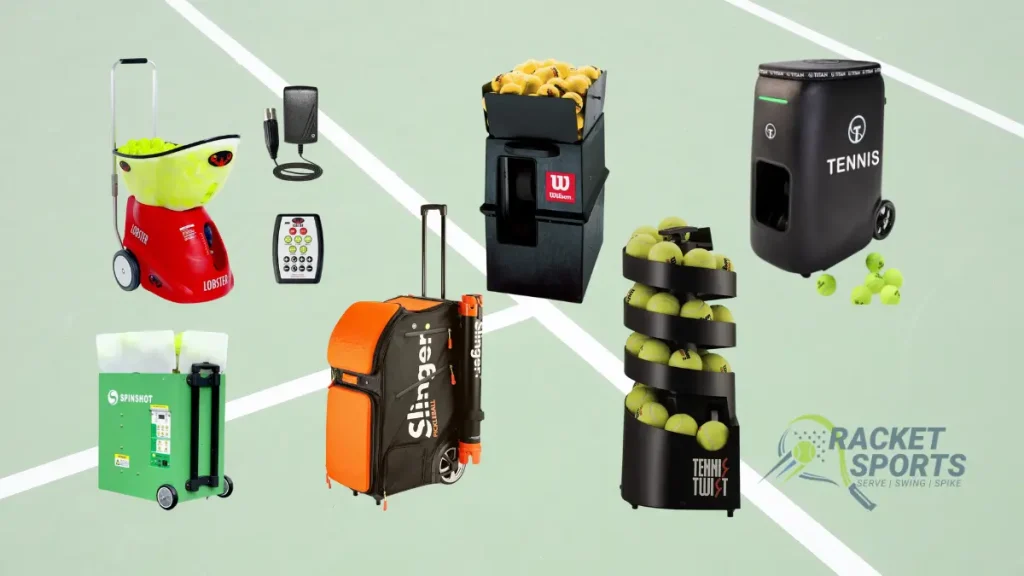
Our Quick Picks
| Sr # | Brand | Ball Capacity | Weight | Topspin/Backspin | Ball Speed | Check Price |
|---|---|---|---|---|---|---|
| 1 | Lobster Elite Grand Five | 150 | 44 lbs. | Yes | 35-80 mph | CHECK ON AMAZON |
| 2 | Wilson Portable | 110 | 38 lbs. | Yes | 10-75 mph | CHECK ON AMAZON |
| 3 | Titan One | 130 | 48 lbs. | Yes | 10-80 mph | CHECK ON AMAZON |
| 4 | Nisplay Portable | 80+ | 26 lbs. | Yes | up to 68 mph | CHECK ON AMAZON |
| 5 | Tennis Twist | 28 | 10 lbs. | No | 10-15 mph | CHECK ON AMAZON |
| 6 | Spinshot Plus 2 | 120 | 41 lbs. | Yes | 18-80mph | CHECK ON AMAZON |
| 7 | Sports Tutor Cube | 70 | 24 lbs. | No | 10-50 mph | CHECK ON AMAZON |
| 8 | Lobster Elite Liberty | 150 | 35 lbs. | Yes | 10-70 mph | CHECK ON AMAZON |
Top 8 Best Tennis Ball Machines of 2025
1. Lobster Elite Grand Five – Best for Advanced Players
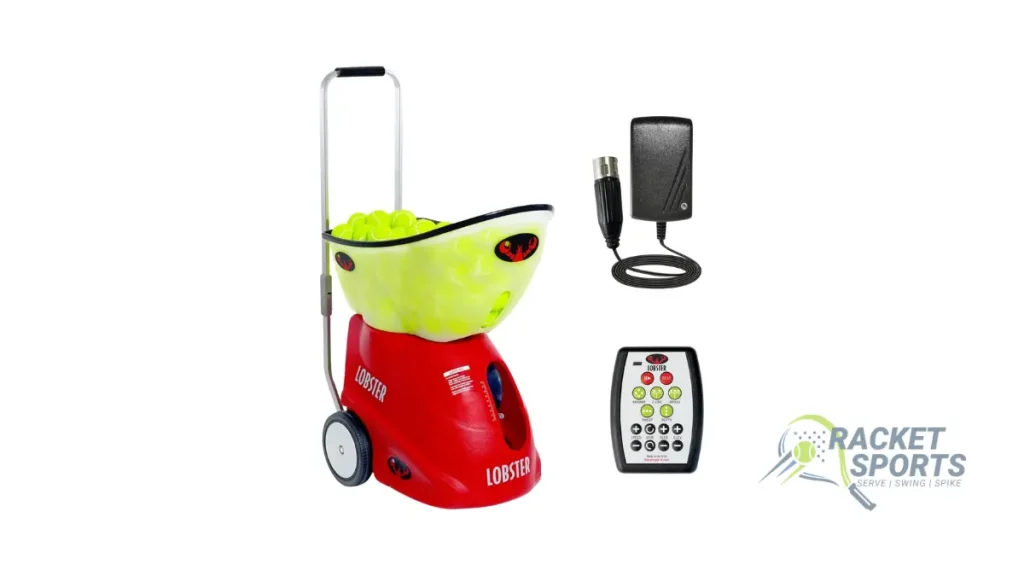
4.1
Specifications:
The Lobster Elite Grand Five is tailored for advanced players and coaches who require a versatile and programmable training partner. It features 12 preloaded drills and the capacity to program custom drills, allowing for a wide range of shot combinations and court coverage. With its ability to simulate match-like scenarios, players can focus on strategic aspects of their game.
This machine boasts a durable design suitable for outdoor use, thanks to its weather-resistant construction. Its extended battery life ensures prolonged practice sessions without interruption. For those seeking to elevate their game through structured and varied training routines, the Lobster Elite Grand Five is an excellent investment.
Key Feature:
- 5-ball oscillation mimics Grand Slam drills.
- Durable with an IP65 waterproof rating, suitable for outdoor use.
- Customizable drills enhance training versatility.
Ideal For: College players and coaches.
Durability: IP65 waterproof rating for outdoor use.
Pros & Cons:
2. Wilson Portable – Best Entry-Level Machine

4.4
Specifications:
The Wilson Portable tennis ball machine is an excellent choice for beginners and recreational players looking for an affordable and user-friendly practice partner. Its straightforward setup and operation make it accessible to those new to tennis or ball machines. The machine delivers consistent feeds, allowing players to focus on developing their strokes and timing.
Durability is a standout feature, with the machine constructed from robust ABS plastic to withstand various weather conditions. Its compact design ensures easy storage and transport, making it suitable for players with limited space. While it may not offer advanced features like spin control or programmable drills, the Wilson Portable provides reliable performance for foundational practice.
Best Wilson Tennis Rackets: Expert Buying Guide 2025
Key Feature:
- Plug-and-play setup under 10 minutes.
- Adjustable ball speeds up to 75 mph with heavy topspin and backspin options.
- Ball feed adjustable from one every 1.5 seconds to every 10 seconds, catering to various training needs.
- Electronic elevation control allows for trajectory adjustments from groundstrokes to lobs.
- Built-in random oscillator delivers shots across the court, simulating real match conditions.
- Holds up to 110 balls with a built-in battery providing 3 to 4 hours of playtime per charge.
- Compact design (22″L x 14″W x 20″H) and lightweight at 38 lbs, featuring a built-in handle and towing wheels for easy transport.
- All-in-one control panel with battery charge indicator for user-friendly operation.
- Backed by a three-year warranty covering both parts and labor.
Durability: ABS plastic withstands rain and sun.
Value: $599 for high school teams.
Pros & Cons:
3. Titan One – Best All-In-One Solution
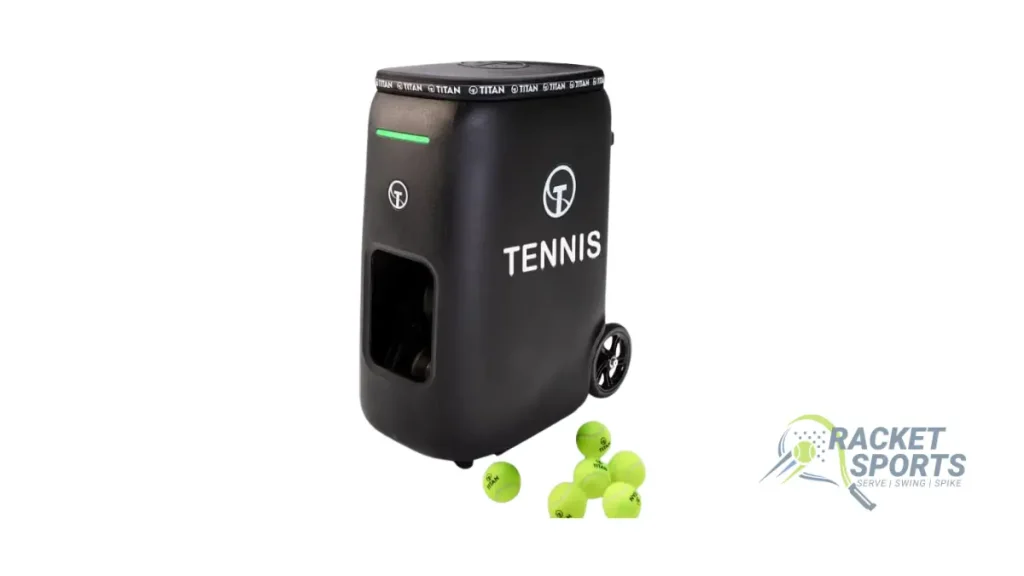
4.5
Specifications:
The Titan One tennis ball machine is a comprehensive solution for players and coaches looking for convenience and performance. Its all-in-one design allows for storage of rackets, balls, and other gear, streamlining the training process. With a ball capacity of 130 and speeds up to 80 mph, it caters to a wide range of training needs.Titan Ball Machines
The machine’s internal oscillation and programmable drills, accessible via the Titan Drills app, provide customizable training sessions. Its sturdy construction and large trolley wheels ensure durability and easy transport. For those seeking a feature-rich machine that simplifies logistics, the Titan One is an excellent choice.Titan Ball Machines.
Key Feature:
- Built-in ball collector saves 15 minutes per session.
- 360° rotating head allows for a wide range of shot simulations.
- All-in-one design stores tennis racket, balls, and other gear.
- Controlled via free Titan Drills app
Ideal For: Academies running back-to-back clinics.
Innovation: 360° rotating head for smashes.
Pros & Cons:
4. Nisplay Portable – Best Budget-Friendly Option
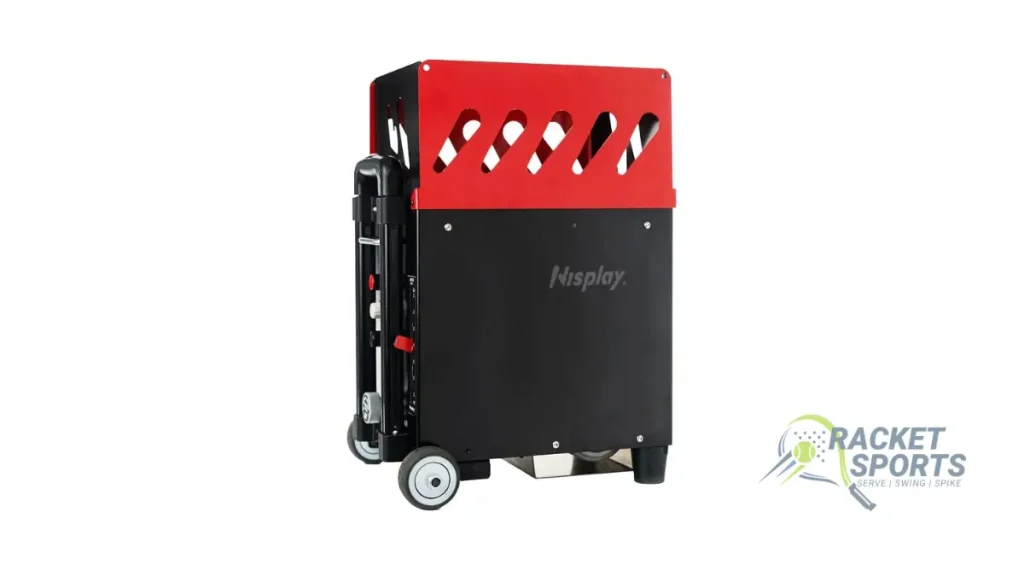
4.2
Specifications:
Nisplay’s tennis ball machines are compact yet powerful, featuring dual motors that deliver speeds up to 68 mph. They offer adjustable topspin and backspin, with a launch angle ranging from 0° to 50°, allowing for versatile training sessions. With a ball capacity of over 80 and a feed rate adjustable between 1 to 10 seconds, you can customize your practice to suit your needs .
Weighing just 26 lbs (12 kg), these machines are designed for easy transport. Features like oversized wheels and a 3-foot folding handle make it simple to move the machine across various surfaces .
Different User Reviews
Users have praised the Nisplay machines for their reliability and ease of use. One user noted, “I’ve used it 13 or 14 times so far and have had no problems. The balls have never jammed.” Another highlighted the machine’s portability, stating, “I am in my sixties and find this machine very light and useful in practicing a wide range of shots.”
Final Thoughts
The Nisplay N1 and N2 tennis ball machines provide a great balance of performance and portability, making them ideal for players looking to enhance their game. Their user-friendly design and customizable features cater to both beginners and experienced players.
Pros & Cons:
5. Tennis Twist – Best for Kids & Beginners
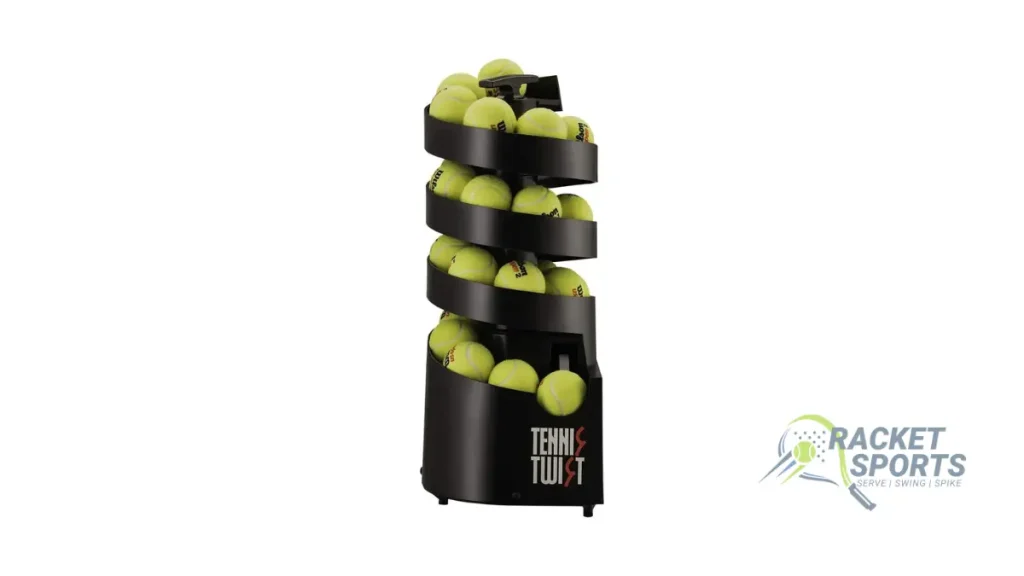
4.2
Specifications:
The Tennis Twist is designed with young players and beginners in mind. Its simple operation and lightweight design make it accessible for users of all ages. Delivering balls at speeds between 15–30 mph, it provides a gentle introduction to tennis fundamentals.
Safety features, such as automatic shutoff when tipped, ensure a secure practice environment. Its compact size and battery-powered operation allow for easy transport and setup. For those starting their tennis journey, the Tennis Twist offers a user-friendly and affordable option.
Key Feature:
- 15-30mph foam ball mode for juniors.
- Lightweight at 12 lbs, making it easy to carry.
- Auto-shutoff feature enhances safety.
Safety: Auto-shutoff when tipped.
Portability: 12 lbs—lighter than most backpacks.
Pros & Cons:
6. Spinshot Plus 2 – Best Intermediate Machine
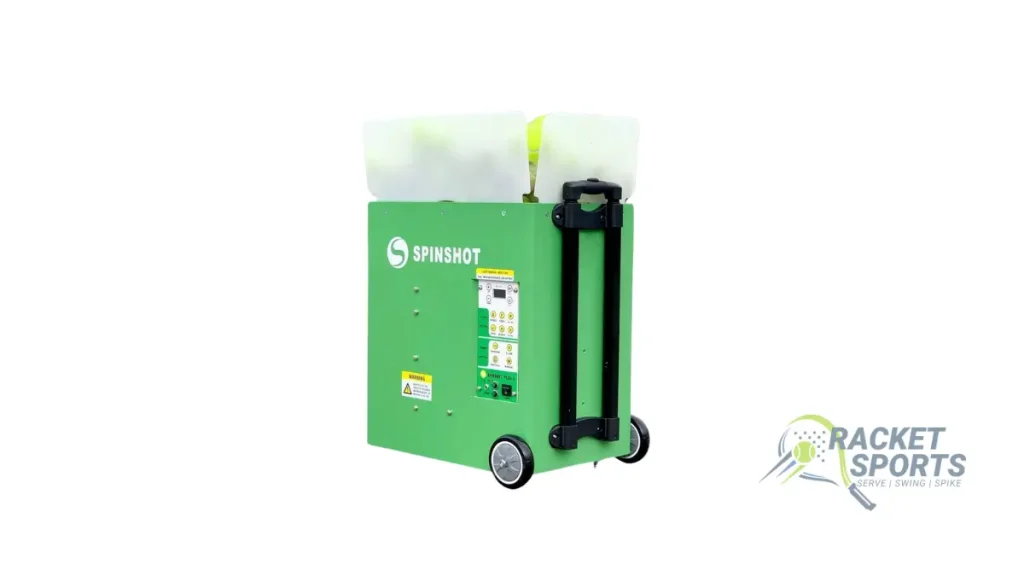
4.3
Specifications:
The Spinshot Plus 2 is a versatile machine catering to intermediate players seeking customizable training. It combines features from previous models, offering programmable drills and adjustable settings for speed, spin, and oscillation. With a ball capacity of 120 and speeds up to 80 mph, it accommodates various training intensities.
Controlled via a user-friendly app or optional remote watch, it allows for seamless adjustments during practice. Its durable construction and portability make it suitable for regular use. For players aiming to refine their technique with tailored drills, the Spinshot Plus 2 is a reliable choice.
Key Feature:
- “Drill Designer” software for custom sequences.
- Offers pro-level spin control at a mid-range price.
- Five-year warranty on motors provides peace of mind.
- Controlled via app or optional remote watch.
Sweet Spot: $1,799 price with pro-level spin control.
Warranty: 5 years on motors.
Pros & Cons:
7. Sports Tutor Cube – Best Portable Design
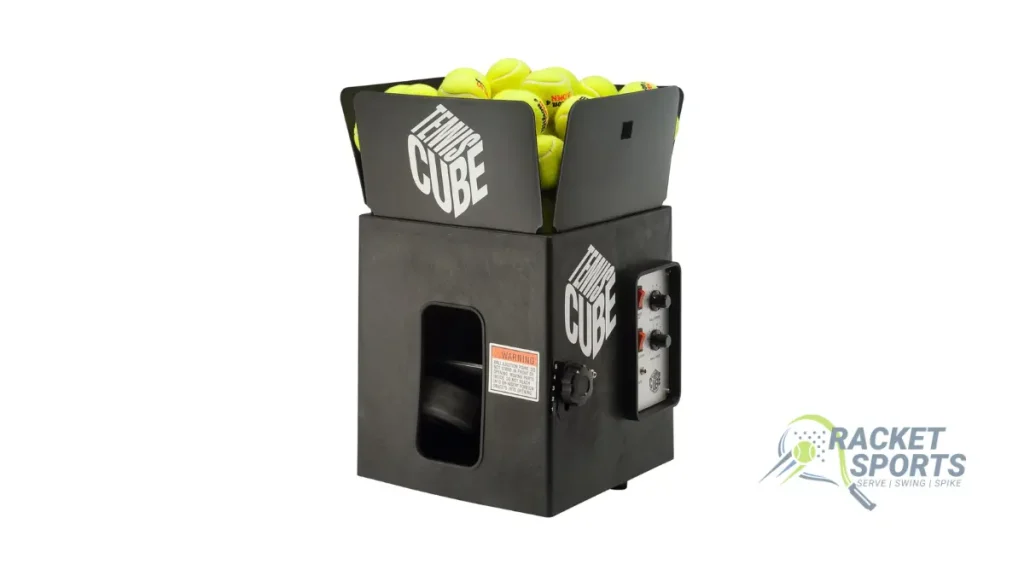
5.0
Specifications:
The Sports Tutor Cube offers a compact and lightweight option for players prioritizing portability. Its cube-shaped design fits easily into car trunks, and its simple controls make it accessible for users of all skill levels. Delivering balls at speeds up to 50 mph, it provides consistent practice opportunities.
While it lacks advanced features like programmable drills, its affordability and ease of use make it ideal for casual players or those with limited space. The Sports Tutor Cube is a practical choice for on-the-go practice sessions.
Key Feature:
- 24″ cube fits in Mini Cooper trunks.
- Includes a shoulder strap for easy carrying.
- EASY-TO-USE KNOB CONTROLS
Performance: Topspin despite compact size.
Accessory: Includes shoulder strap.
Pros & Cons:
8. Lobster Elite Liberty – Best Remote Control Features
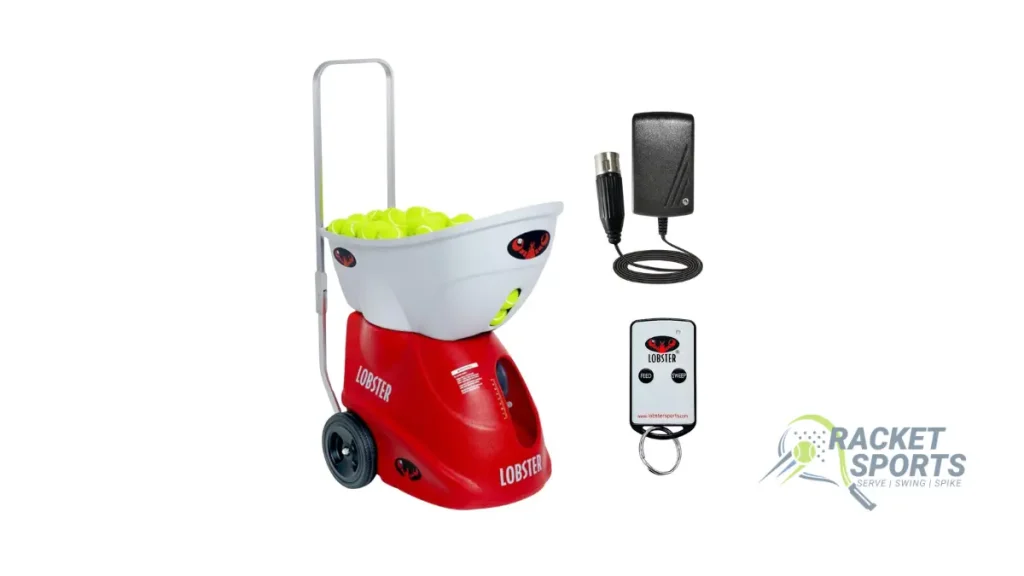
4.1
Specifications:
The Lobster Elite Liberty is a versatile tennis ball machine designed for beginner to intermediate players seeking to enhance their game. It offers ball speeds ranging from 10 to 70 mph and features adjustable topspin and backspin, allowing players to practice a variety of shots. The machine’s random horizontal oscillation simulates real-game scenarios, helping players improve their footwork and shot anticipation. With a ball capacity of 150 and a battery life of 2 to 4 hours, it supports extended practice sessions.
Portability is a key feature of the Elite Liberty, weighing 35 lbs and equipped with oversized wheels and a foldable handle for easy transport. The inclusion of a two-function remote control adds convenience, allowing players to adjust settings without interrupting their practice. While it may lack some advanced features found in higher-end models, the Elite Liberty provides a solid foundation for players aiming to develop their skills.
Key Feature:
- 500-yard RF remote with “Coach Mode”.
- Delivers balls at speeds up to 70 mph with adjustable topspin and backspin.
- Offers full corner-to-corner random horizontal oscillation to simulate real match play.
- Manual elevation control allows for lifts up to 50 degrees, aiding in overhead practice.
- Holds up to 150 balls with a battery life of 2 to 4 hours, ensuring extended practice sessions.
- Equipped with oversized wheels and a foldable handle for easy transport.
- Comes with a 2-function remote control for convenient operation.
Capacity: 300 balls for team practices.
Innovation: Gradually increases difficulty.
Pros & Cons:
How Tennis Ball Machines Work
Tennis ball machines have revolutionized solo practice by simulating realistic rallies with precise spin, speed, and trajectory. These machines serve as tireless partners, ideal for players of all skill levels seeking consistent repetitions. Their internal components work in harmony to replicate match-like scenarios, helping athletes build muscle memory and improve shot selection.
The Mechanics Behind Ball Projection
Dual-wheel systems create true spin, while compressed air chambers control speed. Spinfire’s triple-wheel design achieves sharper angles than competitors. This projection method ensures that the ball’s flight path mimics real-world play, giving users the ability to practice volleys, groundstrokes, and lobs. The use of independent motors in multi-wheel systems further enhances accuracy and consistency during training sessions.
Power Sources Explained (Battery vs. AC)
Lithium batteries last 4–6 hours (replace every 3 years). AC models are 30% lighter, but tether you to outlets. Always carry spares for tournaments. Battery-powered models offer more freedom of movement, making them ideal for outdoor or remote locations, while AC-powered machines often appeal to clubs or indoor courts where stable electricity access is guaranteed. Some hybrid models even allow switching between both sources, offering the best of both worlds.
Spin and Speed Control Technology
Advanced machines adjust RPMs (1–4,000) independently from MPH. Intermediate players need at least 2,000 RPM variability for realistic drills. Modern systems include digital interfaces and pre-programmed drills that target specific skill areas, such as defensive topspin retrievals or offensive baseline rallies.
This separation of spin and speed allows players to recreate a wide array of shot types, from heavy looping forehands to aggressive flat backhands.
Understanding RPMs and MPH
2,500+ RPM creates Nadal-level topspin. 70–80mph suits most recreational players, while pros train with 90+mph flat shots for return practice. Knowing these metrics helps players tailor sessions to their personal goals—whether it’s preparing for high-speed serves, mastering topspin-heavy rallies, or simply improving hand-eye coordination.
For junior players or beginners, machines can be dialed down to more manageable speeds, ensuring steady progress without overwhelming intensity.
Key Features to Consider
Ball Capacity & Hopper Size
A minimum of 150 Tennis balls is recommended to minimize frequent reloading during practice sessions. Transparent lids, such as those found on the Titan One, allow players to monitor ball levels easily, ensuring uninterrupted training. Some machines offer larger hoppers, accommodating up to 200 balls, which is ideal for extended practice sessions without the need for constant refilling.
Oscillation Patterns & Drills
Opt for machines that offer at least three pre-programmed drills to simulate various match scenarios. Elite models, like the Titan One, provide depth variation in their oscillation patterns, which helps in preventing lazy footwork—a common pitfall when using ball machines. Additionally, advanced machines allow users to create custom drills tailored to specific training needs, enhancing the effectiveness of each session.
Remote Control Options
Bluetooth remotes with a range of up to 100 feet offer greater flexibility compared to wired controllers. Newer models, such as the Proton, provide voice command compatibility, allowing players to adjust settings hands-free. This feature is particularly beneficial during solo training sessions, enabling quick modifications to drill parameters without interrupting the flow of practice.
Portability & Weight
Machines weighing under 30 lbs, like the Proton at 9.5 lbs, are ideal for city dwellers who need to transport their equipment frequently. Wheeled bases, such as those on the Spinfire models, facilitate easy movement on hard courts. It’s advisable to test the carry weight with your racquet bag to ensure comfortable transportation, especially if you have to navigate stairs or uneven surfaces.
Noise Levels & Court Etiquette
Quieter models, emitting less than 65 dB, are more suitable for residential areas where noise could be a concern. Rubberized housings help in reducing mechanical noise, making them ideal for early morning practice sessions when noise sensitivity is higher. Some machines also feature adjustable ball speed and frequency settings, allowing users to control the intensity and noise levels during training.
Buyer’s Guide: Choosing the Perfect Machine
Selecting the right tennis ball machine is crucial for enhancing your game. Understanding your skill level, training goals, and budget will guide you to the ideal choice.
Matching Machine to Skill Level
Different skill levels require different machine features:
- Beginners: Seek simplicity with fixed trajectory and low speeds.
- Intermediate Players (3.5–4.0): Look for machines offering spin control and moderate speeds.
- Advanced Players: Demand high-speed settings, spin variations, and programmable drills.
Aligning the machine’s features with your 12-month development goals ensures targeted improvement.
Beginner Recommendations
For those new to the game, a machine with a fixed trajectory under $800 suffices. The Tennis Twist, for example, uses slow-speed foam balls to build confidence safely. This approach allows beginners to focus on form without the distraction of spin or speed.
Intermediate Options
The Spinshot Plus 2 offers speeds up to 70mph with customizable topspin and backspin, making it ideal for 3.5–4.0 players. This flexibility enables players to simulate various match scenarios, enhancing their adaptability and shot selection.
Advanced Features
Advanced players benefit from machines like the Lobster machines, which offers a lob function and 5-ball oscillation. These features prepare players for tournament conditions by simulating realistic ball trajectories and court coverage. Such machines allow for complex drills and shot combinations, pushing players to refine their skills under pressure.
Budget Considerations
Understanding the price ranges helps in making an informed decision:
- Entry-level: $400–$800
- Mid-range: $1,200–$2,500
- Professional: $3,000+
Used Lobster machines retain about 70% of their value after 3 years, making them a cost-effective option for those seeking quality on a budget.
Frequency of Use Factors
Your usage frequency determines the machine’s durability requirements:
- Daily Users: Need commercial-grade components for longevity.
- Weekly Players: Should prioritize machines with warranties of 3+ years to ensure reliability.
A longer warranty often indicates the manufacturer’s confidence in the machine’s durability and performance.
Court Space Requirements
The available space influences machine selection:
- Full-Court Machines: Require at least 40 feet of space.
- Compact Models: Like the Sports Tutor Cube, are suitable for smaller areas such as driveways.
Always verify facility rules first to ensure compliance with space and usage regulations.
Investing in the right tennis ball machine can significantly enhance your training experience. By considering your skill level, training goals, budget, and usage frequency, you can select a machine that aligns with your needs, ensuring effective and enjoyable practice sessions.
Benefits of Using a Tennis Ball Machine
24/7 Practice Availability
Train at dawn or midnight without partner dependencies. One user jumped from 3.5 to 4.5 in 8 months with daily machine sessions. This flexibility is invaluable for athletes juggling busy schedules, allowing them to practice at their convenience.
Whether it’s early morning or late at night, the ability to train without relying on a partner ensures consistent progress. Such consistent practice can lead to significant improvements in performance over time.
Stroke Consistency Development
300+ identical backhands per session create faster neural development than variable partner rallies. Repetition of the same stroke reinforces muscle memory and neural pathways, leading to more consistent performance during matches. Unlike variable rallies with a partner, this focused practice accelerates skill acquisition and enhances precision.
Footwork and Conditioning
Program random deep/short combinations to improve explosive movement. Attach heart rate monitors to track intensity. This approach not only enhances agility but also boosts cardiovascular fitness. By monitoring heart rate, athletes can ensure they’re training at optimal intensity levels, leading to better endurance and overall performance.
Supplementing Coaching
Reinforce lesson concepts between sessions. Isolate specific strokes needing technical adjustments. This targeted practice allows athletes to focus on areas that require improvement, complementing formal coaching sessions. By isolating and refining specific techniques, players can accelerate their development and gain a competitive edge.
Rehabilitation Applications
Controlled feeds aid post-injury recovery. Occupational therapists use machines for motor skill rebuilding. These machines provide consistent and safe environments for patients to regain strength and coordination. By facilitating repetitive movements, they help in retraining the brain and muscles, promoting faster and more effective rehabilitation.
Tennis Ball Machine Accessories
Essential Add-Ons
Ball tubes ($40) speed collection. These lightweight, transparent tubes, such as the Tenn-Tube, can hold up to 20 balls and feature rubber locking straps to secure them during transport. Waterproof covers ($60) protect electronics. High-quality, durable materials shield your machine from moisture, dirt, and debris, prolonging its lifespan and ensuring peak performance. Foldable dollies ($90) assist on stairs. Heavy-duty stair-climbing hand trucks, made of steel alloy and equipped with large rubber wheels, can carry up to 330 lbs on flat surfaces and are recommended for up to 280 lbs on stairs.
Ball Types and Durability
Pressureless Penn balls last 8–10 sessions. These balls maintain consistent bounce and are ideal for practice sessions. Avoid pressurized balls—they deform quickly in machines. While they offer better bounce initially, they tend to lose pressure and wear out faster, making them less suitable for repeated use in ball machines.
Transportation Solutions
For Uber transport: Proton’s backpack case or foldable bike trailers ($89) protect car interiors. The Proton ball machine is compact and lightweight, allowing users to carry it in a duffle bag along with up to 72 balls. Foldable bike trailers, like the Burley Travoy, are lightweight and can carry up to 60 pounds, making them ideal for transporting equipment without damaging vehicle interiors.
Maintenance Tools
Wheel brushes remove fuzz. Regular cleaning with brushes or air compressors helps maintain the machine’s performance by eliminating accumulated debris. Silicone lubricant preserves moving parts. Products like B’laster Silicone Lubricant provide long-lasting lubrication, reducing wear from constant friction and ensuring smooth operation.
Digital multimeters check battery health. By measuring voltage and current, multimeters help identify faulty batteries, ensuring your machine remains reliable during practice sessions.
Troubleshooting Common Issues
Battery Life Solutions
Store at 40-60% charge during off-seasons. Replace when runtime drops below 2 hours to prevent motor strain.
Ball Feed Problems
Clean rollers monthly with isopropyl alcohol. Use plastic guitar picks—never metal—to dislodge stuck balls.
Remote Connectivity Fixes
Replace batteries every 6 months. Reset pairing if lag occurs. Avoid interference from phones or smartwatches.
Weather Protection Tips
Wipe down after dew sessions. Never operate in heavy rain. Store indoors with silica gel packs to prevent moisture damage.
Frequently Asked Questions
How Long Do Tennis Ball Machines Last?
Quality machines average 7-10 years with proper maintenance. Commercial models often exceed 15,000 operating hours.
Are Warranties Worth It?
3+ year coverage is essential. Spinshot’s 5-year motor warranty leads the industry.
Can You Customize Drill Patterns?
Advanced models store 50+ user-created sequences. Some sync with video analysis software for technical tweaks.
What’s the Average Price Range?
Serious players should budget $1,500-$3,000. The $1,800-$2,200 range offers peak value.
How Much Maintenance Is Required?
Monthly cleaning and annual professional servicing optimizes performance. Wheel replacements occur every 2-3 years.
Conclusion: Our Top Recommendations
Best Budget Pick
Nisplay’s tennis ball machines are compact, budget-friendly, and powerful, featuring dual motors that launch balls at speeds of up to 68 mph.
Best for Serious Players
Lobster Elite Grand Five withstands daily abuse while mimicking elite training conditions.
Best All-In-One Solution
The Titan One tennis ball machine combines high-performance training with built-in storage for rackets, balls, and gear, offering a complete all-in-one solution for players and coaches.
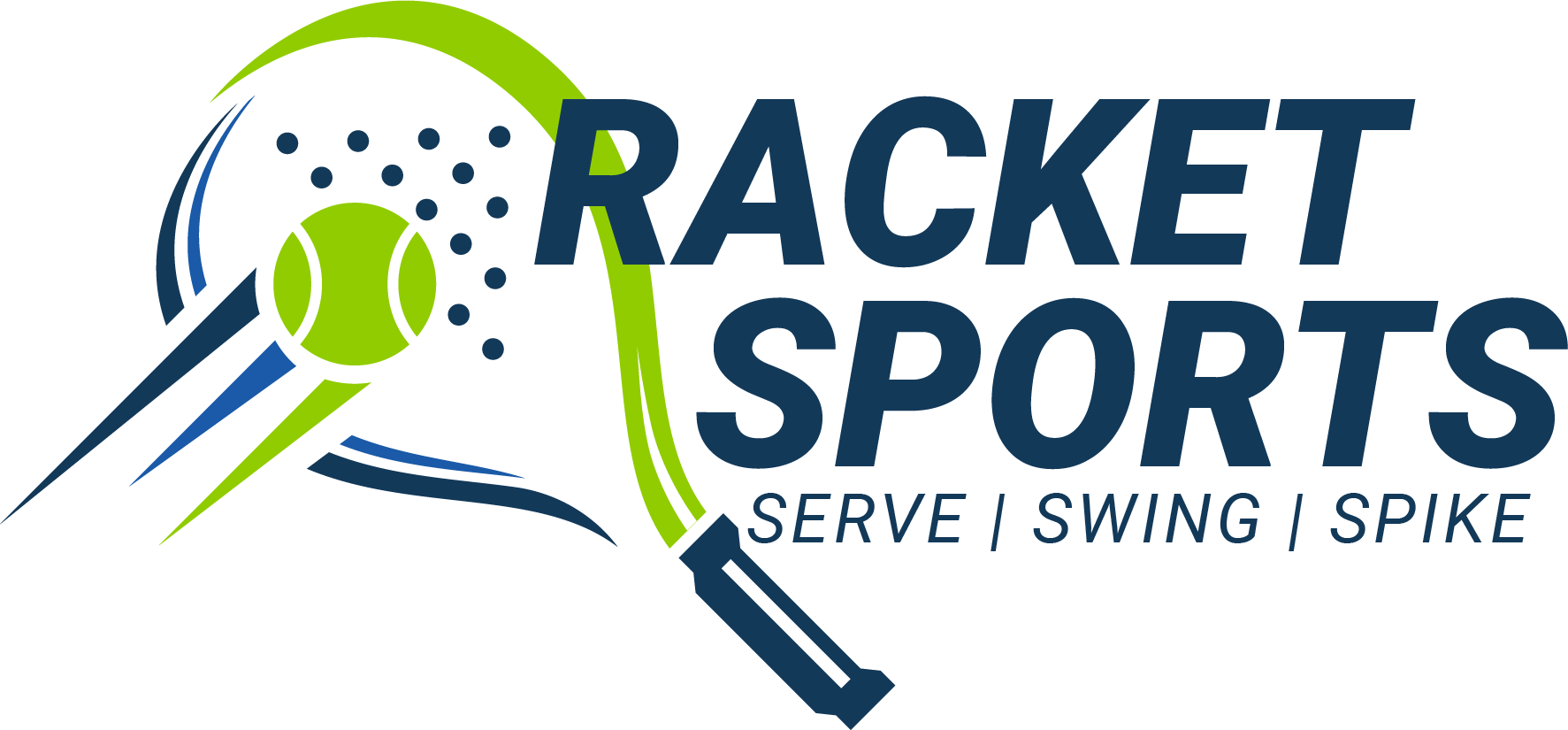
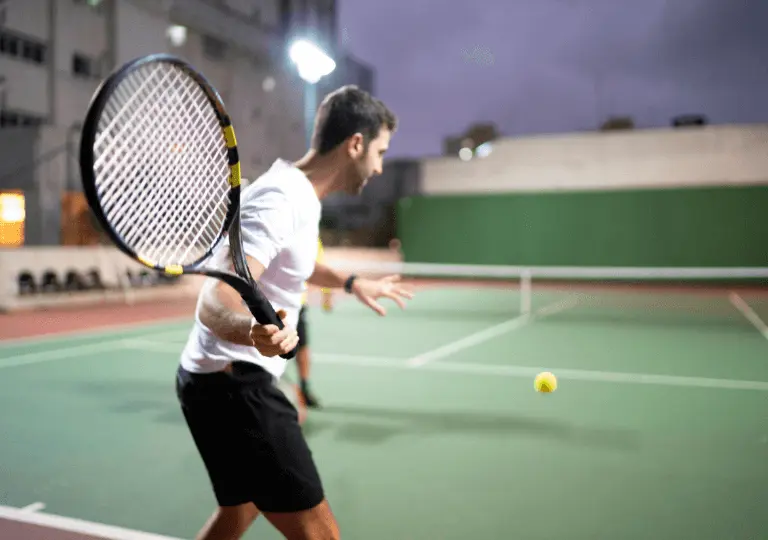
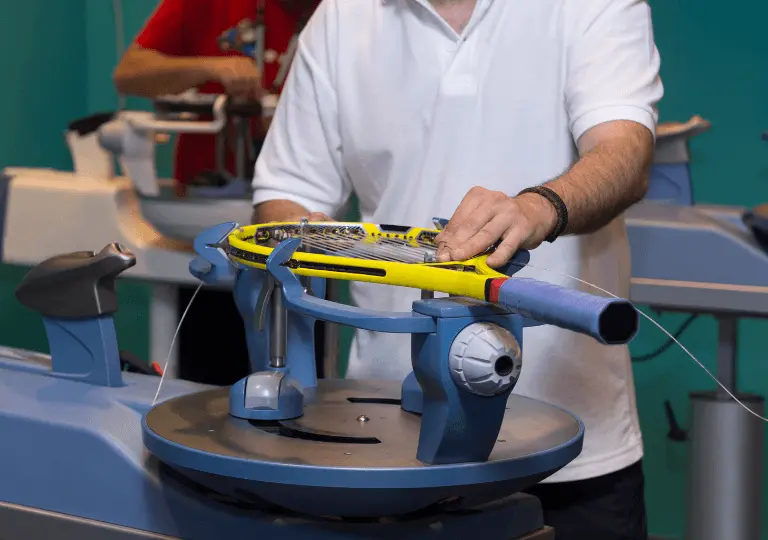
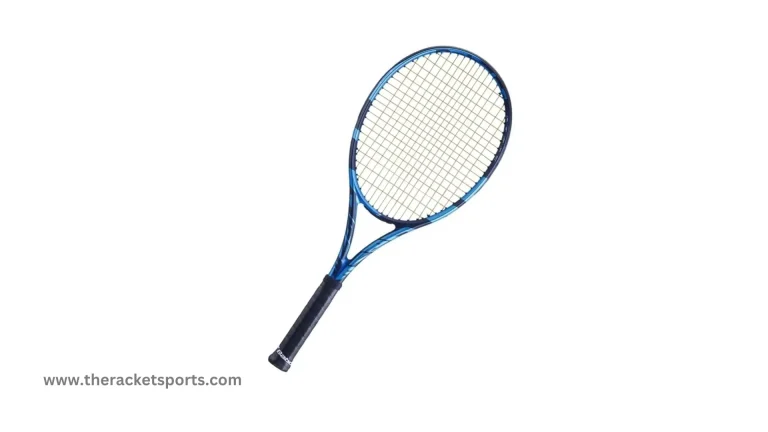

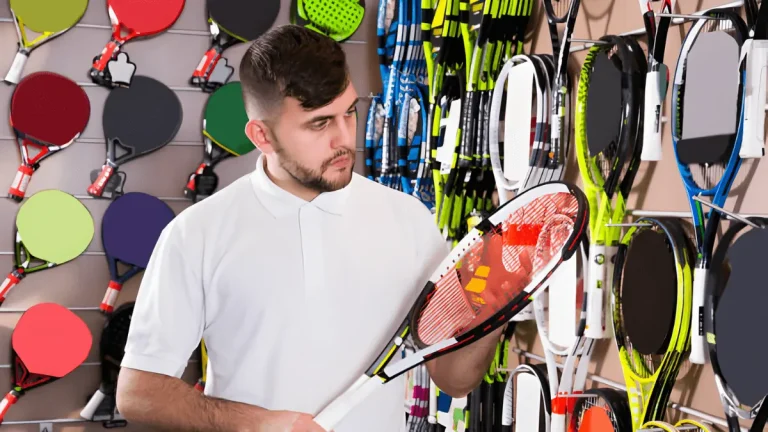
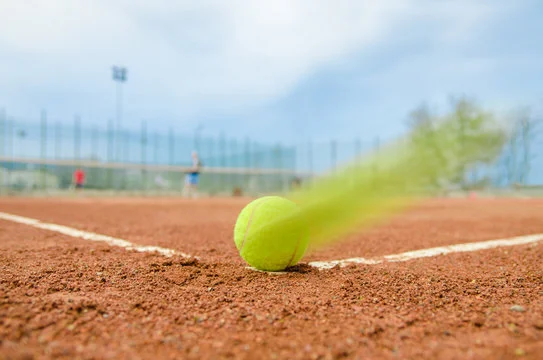
I feel that is among the such a lot important information for me.
And i’m satisfied studying your article. However want to remark on few
general issues, The website style is ideal, the articles is truly great : D.
Good task, cheers